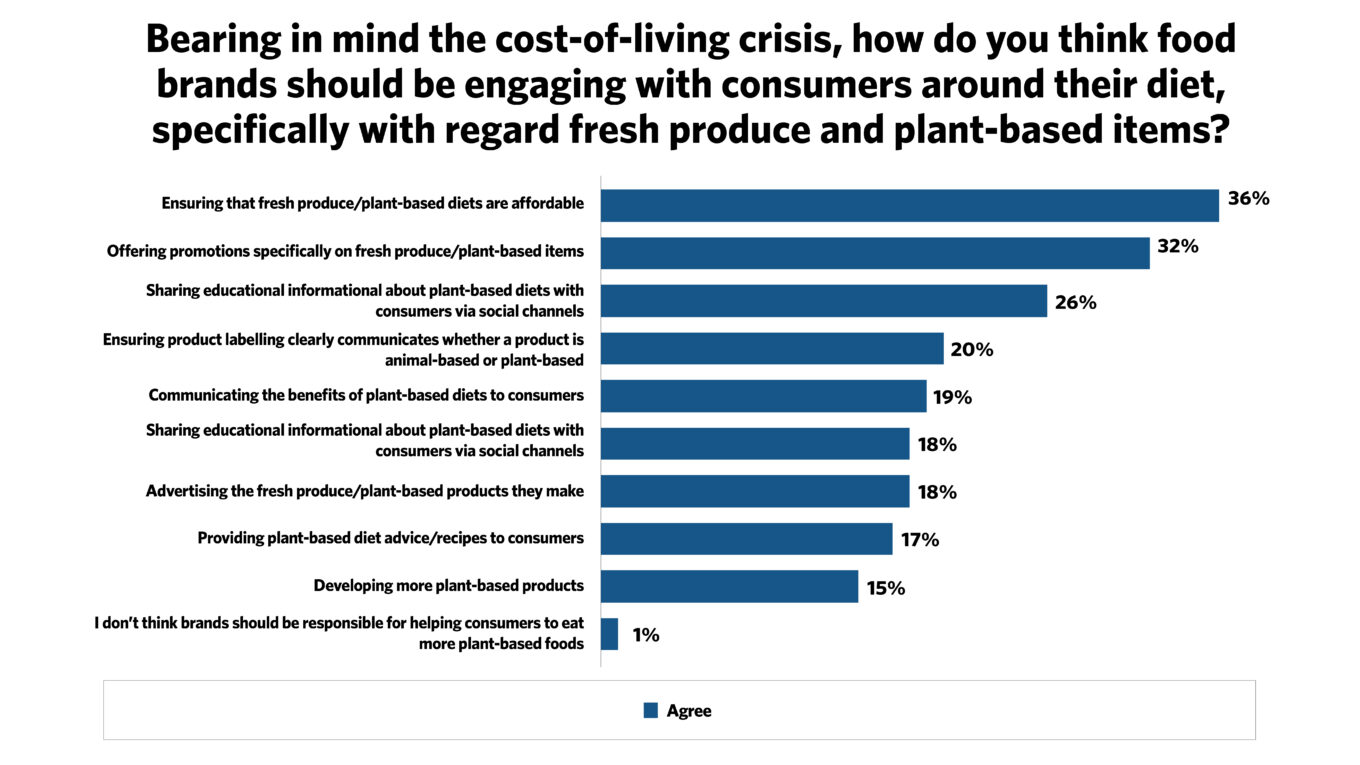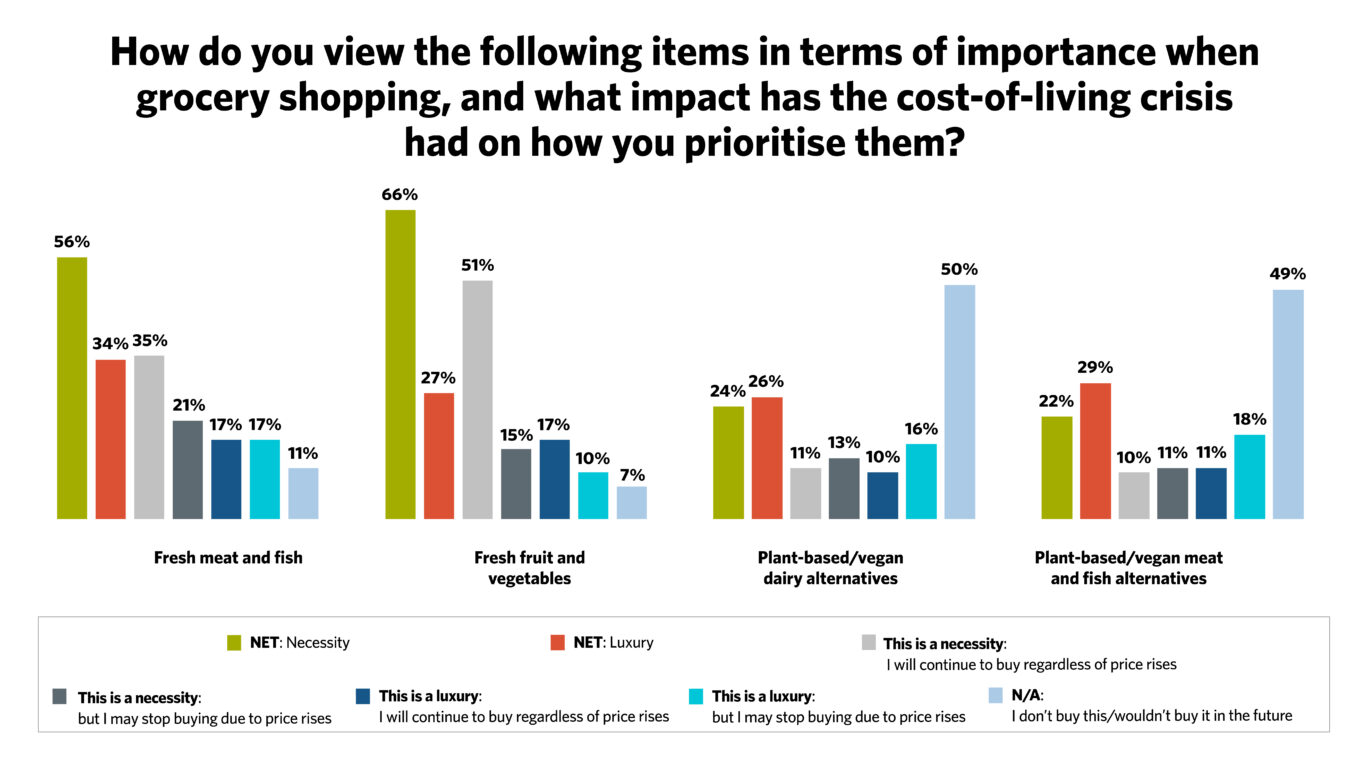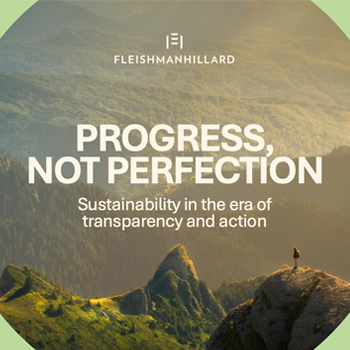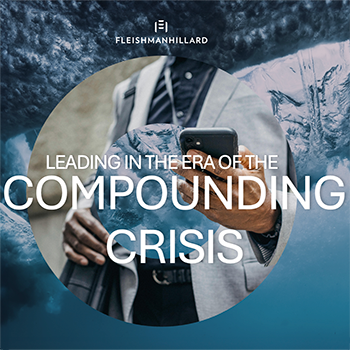Making ends meat: How the cost-of-living crisis is impacting consumer dietary habits

As the real impacts of the cost-of-living crisis unfold and the food and drink sector finds itself facing a perfect storm of issues, the FleishmanHillard UK Food, Agriculture and Beverage team is exploring the implications for brand and communication teams in our new ‘Cost-of-Living Bites’ series.
Cameron Elliott, an account manager in FleishmanHillard UK’s Consumer team, takes a look at how rising inflation and the resulting decreased disposable incomes are affecting the way we purchase and consume food as a nation.

There’s sometimes a perception that as Brits, we are set in our ways with food – with major national newspapers regularly referring to the UK’s “food rut” over the past 18 months – but here at Fleishman Hillard UK, we would challenge that perception. Whilst it’s true that as a society we enjoy routine and often choose the same meals, the reality is that we aren’t set in our ways in terms of the actual ingredients we choose to cook with.
2022 has proven this more than ever, with booming inflation playing havoc on retail pricing, resulting in unprecedented consequences for consumer behaviour. FleishmanHillard UK research carried out in July 2022 shows that 60% of consumers agree that the cost-of-living crisis has impacted their understanding of dietary choices available to them.
Ultimately, price is king – it always has been, and likely always will be. As consumers, we want to eat well and healthily, but the cost-of-living crisis is squeezing the attainability of that ambition. FleishmanHillard UK research shows that over half of UK adults now consume lower quality and cheaper ingredients now compared to before the crisis (51%).
Beyond this, 36% consume less fresh produce and 35% consume more tinned produce; 34% skip meals entirely; and a whopping 19% – almost one in five – now visit food banks, which based on our findings, we would estimate to be over 10 million UK adults. It’s pretty grim out there, and the current climate suggests a revaluation of current marketing approaches is needed – with increased transparency and creativity necessary across brand communications.

Consumer Expectations
People are demanding more from retailers and brands during these testing times. Our research found that 99% of consumers think that brands should be responsible for helping consumers to eat more fresh and plant-based items. Methods by which this can be achieved include sharing more educational information; better product labelling and advertising; and by providing more advice, recipes and a greater variety of products in general. Plus, 36% of consumers believe that retailers and brands should make fresh and plant-based produce more affordable.

One marketing route for brands to help consumers add more fresh and plant-based goods to their shopping baskets is via discounts and promotions. Popular with consumers across the board, research with our colleagues at Hall & Partners conducted in September 2022 found that 59% of buyers look out for discounts and promotions more often than they used to in light of their reduced disposable income. The recent trialling of removing best before dates in certain retailers will also help minimise food wastage in store and at home and support tackling any stigma surrounding the purchase of discounted products.
Luxury vs. Necessary Produce
FleishmanHillard UK data shows that there is huge consumer demand for affordable fresh produce as the cost-of-living crisis develops, whether that’s fresh meat, fish, or vegetables. Ultimately, meat and fish are seen as more luxury items, and are more likely to be sacrificed as the cost-of-living worsens, with 38% of consumers responding that they may stop buying meat/fish produce due to price rises. On the other hand, only one in four (25%) are likely to give up fresh fruit and vegetables.
There’s a question mark over plant-based items in general as the data is less clear how this category will be affected. Many of these products simply aren’t on the radar for consumers – with around half the population disregarding the category completely. This provides potential opportunities for growth as vegetarianism (or at least “flexitarianism”) continues as a trend and is unlikely to go away, particularly when you consider our research shows that consumers consider fresh fruit and vegetables as more of a necessity than fresh meat and fish products.

In summary
These are just a couple of ways in which the cost-of-living crisis is impacting purchasing intentions and behaviours. Given that appetite for higher quality produce remains high from a consumer perspective, companies should focus on making this produce affordable to buyers by avoiding price hikes if feasible, utilising timely promotions and discounts where appropriate such as via loyalty schemes, and ensuring they are sharing educational information with potential customers via various available channels – clearly communicating the benefits of fresh produce to consumers. Tone of voice is important: aim to be empathetic, but not to the extent of appearing patronising, and most importantly, stay honest and true to the intentions and purpose of your brand as much as possible – in 2022, consumers are expecting authenticity above all else.
FleishmanHillard UK research carried out in partnership with Vitreous World. Fieldwork ran from 7th – 12th July, and 2,000 UK adults were surveyed (nationally representative sample for age, gender, region, ethnicity, sexual orientation and disability).
Hall & Partners research carried out in partnership with FleishmanHillard UK. Fieldwork ran from 9th – 12th September 2022, and 1,306 UK adults were surveyed.
Find Out More
-
Corporate Affairs Trends for 2026
December 10, 2025
-
Leading in the era of the compounding crisis
October 2, 2025


